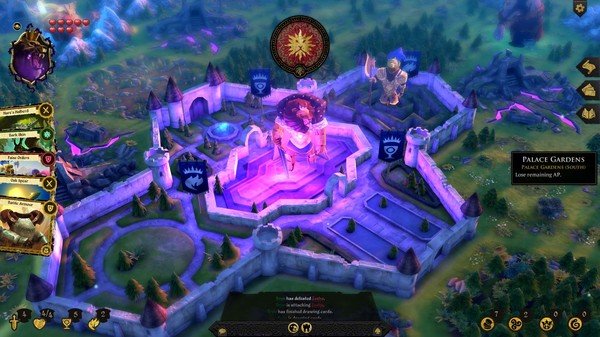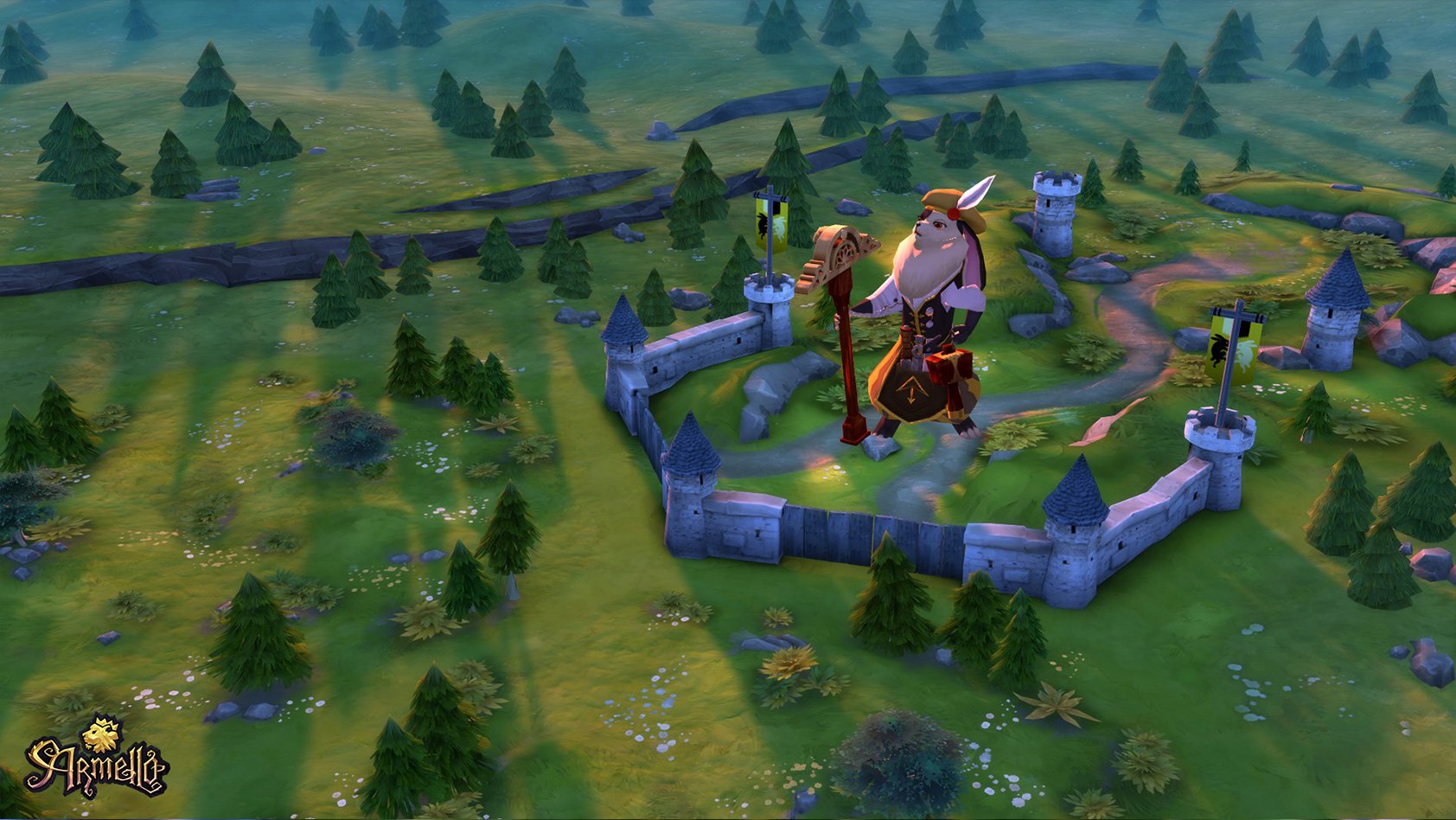Board Game of Thrones.
For a while I frowned upon those who gleaned joy out of tabletop games. With my own experiences of them limited to tedious games of Monopoly and Cluedo (which is Clue in the States) as a young boy, and with my knowledge of more complex tabletop games solely consisting of Dungeons & Dragons and the negative connotations that inevitably follow outing yourself as a D&D fan, I stuck to my video games because how could playing with a few plastic pieces on folded cardboard possibly compete with pixels, polygons, and expansive fictional worlds beaming out of my TV screen?
Eventually, though, I began to see the light. After picking up Dungeons & Dragons: The Legend of Drizzt and finding myself completely overwhelmed by it, I nonetheless found myself intrigued enough to invest in a few more board games to add to my fledgling collection, from the classic Settlers of Catan through to Spartacus and, my most recent favorite, Betrayal at House on the Hill [Another hearty recommendation here! ~Ed. Nick Tan]. After spending so much time thinking that tabletop games seemed unnecessarily convoluted and were enjoyed solely by people who probably permanently carried a set of dice in their back pocket in case of a board game emergency, I finally realized that given the right circumstances and the right group of people, a crowd of adults can actually have a lot of fun playing tabletop games.
Enter Armello, a fantastical, disconcertingly dark game from the unfortunately-named developer League of Geeks, that is essentially a straight-up board game that has made it to PC rather than your local Toys "R" Us. While a lot of 4X and isometric strategy games certainly share similarities with their tabletop cousins, Armello is simply a board game that you just so happen to be able to download on Steam and PSN. Fortunately it’s an enjoyable one, and as those who know the plight of banding together a big enough group to play a tabletop game will sympathize with, it’s a pleasant change of pace to be able to hop in a game with other people whenever the mood strikes you.
The game features a single-player and an online multiplayer offering, allowing you to grace its board with computer-controlled characters, friends, or strangers. Four players are required for a session, though, so if you are lacking in people to join you, the game will automatically assign enemy A.I. to assuming the missing player slots. Fortunately, the A.I. is capable enough to carry itself through these matches, though you’ll want to try to avoid playing with them for the most part as Armello is a multiplayer-focused experience. This is evidenced in the aforementioned single-player offering, which only allows you to play out a game against the CPU and doesn’t feature a story or campaign of any kind—the closest you’ll get to anything of the sort is in an informative prologue guiding you through its basics.
Armello features a cuddly aesthetic consisting of various anthropomorphic woodland creatures and a bright, colorful world that is completely offset by its bleak backstory. Told through a series of dialogue exchanges between your characters’ companions in its prologue, the game’s plot revolves around a soul-sucking disease referred to as “the Rot” taking control of the mind of Armello’s king, with his illness leading him to make evil decisions and lay waste to the world around him alongside his demonic Bane minions and naïvely-devoted royal guards. It is therefore the task of the player to usurp/revive the king using one of four methods, with these methods acting as win conditions that will lead to you being crowned victorious over your three opponents.
The variety of conditions in which you can win in Armello lead to multiple paths which you can travel to ensure success. The game tasks you with garnering Prestige, which you can earn by completing quests, defeating an enemy hero, or slaying one of the Banes. Each turn is divided into two parts, day and night, and when dawn breaks the player with the highest Prestige—the “Prestige Leader”—will be asked by the king to select from one of two options that will change the flow of play. These options can range from increasing the attacking power of the rogue Banes on the board, to changing around the stats of the Prestige Leader’s rivals. Achieving a high Prestige level is also crucial as doing so dramatically increases your chances of winning; if a player makes an attempt on the king’s life but is killed by him in the process, the player with the highest Prestige therefore becomes king and wins the game.
This is certainly the easiest way to win, though there are also more subtle ways in which you can snatch victory from out of the hands of your rivals. You can obtain the four Spirit Stones that are dotted around the map at certain intervals and can also be found as quest rewards, take them to the king’s palace, and use them to cleanse the monarch and restore order to the world of Armello. Or you can take the more dastardly route and garner more Rot than the king, then storming the palace and defeating him in order to become the world’s next dark overlord. The last, and most obvious, option is to kill the king in combat, though doing this presents its own risks because if you lose, you’ll hand the victory over to the player with the most Prestige points.
There is a problem with the balancing of these win conditions, though, as some are far more obvious and less challenging paths to victory than others. Pursuing Prestige is undoubtedly the most effective method, as trying to break into the King’s palace to slay him presents its own set of dangers that at best can see your character coming away with some battle wounds, and at worst can see you dying while trapped inside his palace, thus handing the victory to someone else. While the Prestige Leader may change rather frequently in a round, other win conditions like the Spirit Stones and Rot tend to happen very rarely since they are far riskier propositions. While it’s nice to have the option of being able to complete the game using other means, it removes a lot of the game’s strategic elements when everyone is aiming for the same goal for the majority of the game.
You’re helped to your goal by way of a number of cards that are drawn at the beginning of each in-game morning, which are split into Items, Spells, and Trickery. These cards can, among other things, give you buffs that aid you on your journey, tinker with your enemies’ cards or their stats, or outright kill them if their health is low enough. You can also earn these cards by completing quests or by exploring dungeons. Each card is wonderfully animated, boasting the kind of attention to detail you’d expect more from a CCG, not from a game in which they aren’t the focal point. The detail poured into their appearance is also echoed in the game as a whole, as while Armello doesn’t exactly feature-varied environments (there’s only one board to choose from in the whole game), the anthropomorphic characters you can choose to play as each boast a charmingly cartoonish aesthetic that is enduringly adorable—that is, until they begin slaughtering one another.
Movement across the game’s board is limited to how many Action Points you have, with certain tiles featuring different environment effects that can help or hinder you. If you move onto the tile of an enemy, you will launch into one-on-one combat with them. These battles revolve around how many swords and shields you roll in your virtual handful of dice, with swords symbolizing your attack and shields your defense. Certain buffs you’ve acquired throughout the game can also come into play to increase these stats during battle or award you more dice, and you can even “Burn” any cards in your possession that feature a sword/shield symbol on them to obtain more points in these categories and better equip yourself. Death isn’t permanent in Armello, with you spawning back at your starting point if an enemy lays waste to you, but you do lose a crucial Prestige point so it is vital that you refrain from dying as much as possible.
While dying may not be fatal, it can certainly prove to be an irritant as meeting your untimely demise causes you to gain a Rot point, which then means that you lose health after each turn. Not keeping on top of your Rot/health will inevitably cause you to die over and over again, which causes you to plan out your turns accordingly to ensure that you don’t get caught out in the open, surrounded by your enemies and with no means to ensure your survival.
However, Armello falters somewhat in encouraging strategic planning, with my best laid plans throughout the course of a match often devolving into madcap scrambles to obtaining the most Prestige in the dying moments of a game. Given that becoming Prestige Leader is the easiest victory condition to achieve, more often that not every player finds themselves doing this, which can leave games feeling decidedly one-note and often leads to them being drawn out until the King has met his demise and a winner has been crowned by default.
While game sessions can still be enjoyable in spite of this due to the battles that take place and rivalries that form within them, the race to the end isn’t nearly as exhilarating as it is in the best tabletop games, and often I found my level of excitement during a game drift into ambivalence as I was forced to wait lengthy periods of time between turns, and then spend said turn moving towards the weakest opponent on the board in order to garner more Prestige.
When opponents are aiming for different victory conditions other than becoming Prestige Leader, Armello can be an engaging experience that can hold the player’s attention until the last minute, though this is rarely the case given that the games aren’t balanced in favor of having players pursue their own individual strategies. Outside of these rare instances, Armello is a worthwhile, if inconsistent, spin on the strategy tabletop game with enough character to carry it through those long periods in which players do nothing even if it does falter considerably during its final stretch.
I enjoyed my time with Armello, as did the friends I played it with. While it doesn’t quite compete with some of the compelling tabletop games I have played over the past couple of years—and it’s marred by some confusing design choices that stand to stifle some of its more unique features—if you and a group of friends enjoy tabletop games but struggle to find the time to meet up and play them, then you’ll likely find Armello worthy of your time.
-
Excellent character design
-
Cards are beautifully animated
-
Very fun when everyone isn’t focused upon Prestige
-
Victory contains are poorly balanced
-
Game sessions go on for far too long
-
No single-player offering outside of matches with enemy A.I.
armello
-
armello #1

-
armello #2

-
armello #3

-
armello #4

-
armello #5

-
armello #6

-
armello #7

-
armello #8

-
armello #9

-
armello #10

-
armello #11

-
armello #12

-
armello #13

-
armello #14

-
armello #15








